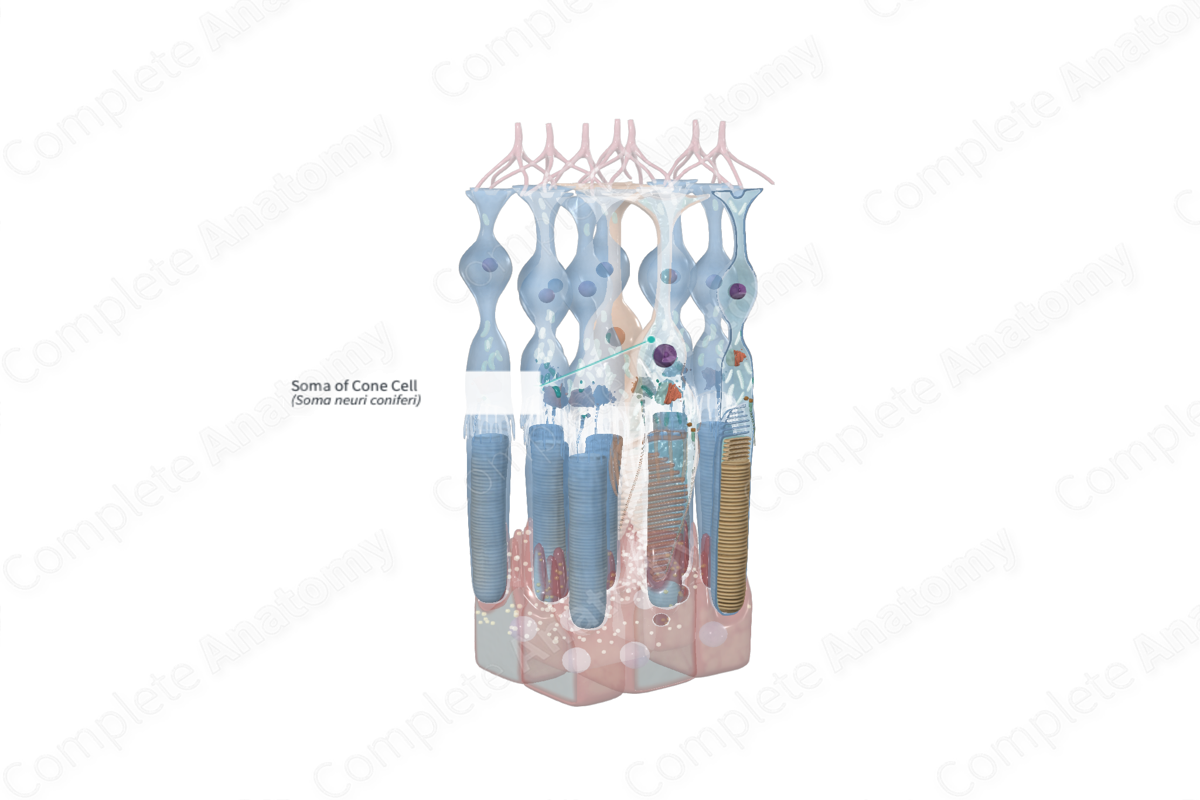
Quick Facts
The soma, or cell body, is the portion of a cell that contains the nucleus, independent of projections such as an axon or dendrites (Dorland, 2011).
Structure and/or Key Features
The soma, or cell body, is the region within the photoreceptor cell that houses the nucleus and most of the protein synthesis and metabolic cellular organelles. The soma of the cone cells is large in diameter, measuring around 5 µm (Besharse and Bok, 2011).
Anatomical Relations
The soma of the cone cells tends to form a single layer in the inner aspect of the outer nuclear layer and often penetrate the outer limiting membrane. The soma is positioned in between the inner segment and the axonal process of the photoreceptor cells. Besides the somata of other cones and rods, the space between photoreceptor cell bodies contains the outer process of Müller glial cells that at their distal end compose the outer limiting membrane.
Function
The soma houses the nucleus, which contains the cell’s DNA. It is necessary for gene expression, transcription and translation that forms the cell developmentally and maintains its biochemical structural and metabolic functions.
References
Besharse, J. and Bok, D. (2011) The Retina and Its Disorders. Elsevier Science, p. 156-162.
Chen, J. and Sampath, A. (2012) 'Structure and Function of Rod and Cone Photoreceptors', Retina Fifth Edition, 1, pp. 342-359.
Dorland, W. (2011) Dorland's Illustrated Medical Dictionary. 32nd edn. Philadelphia, USA: Elsevier Saunders.

